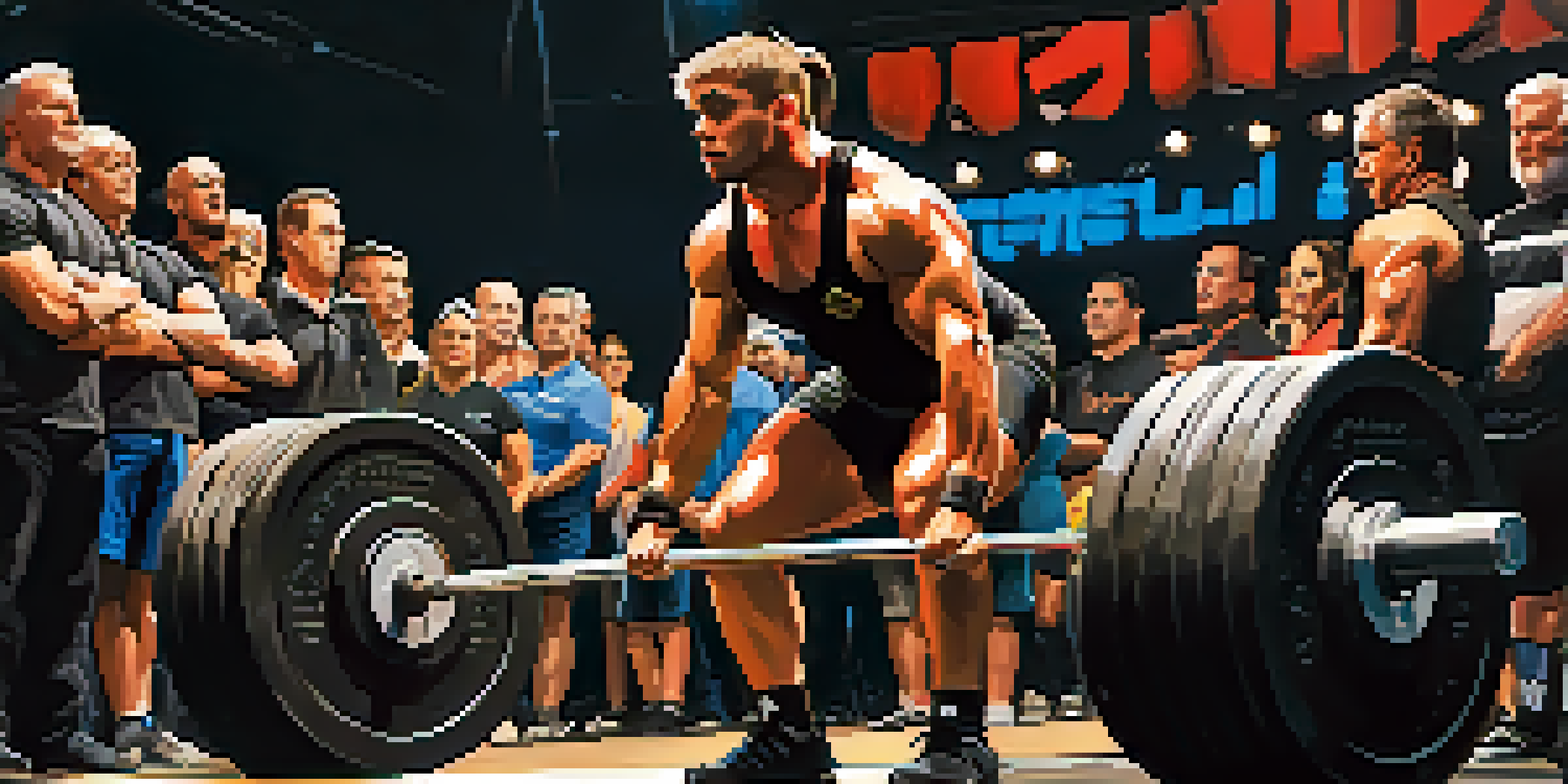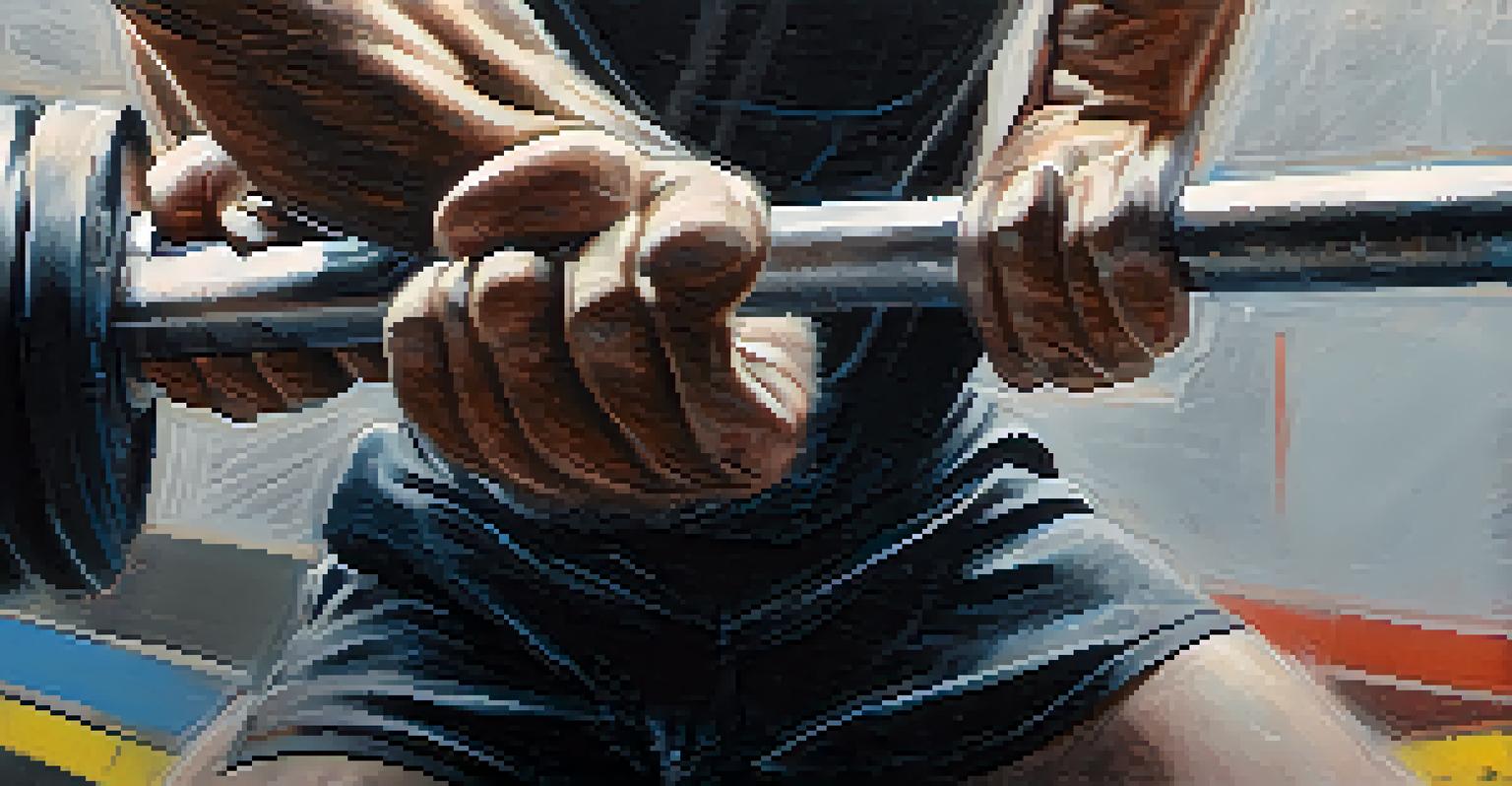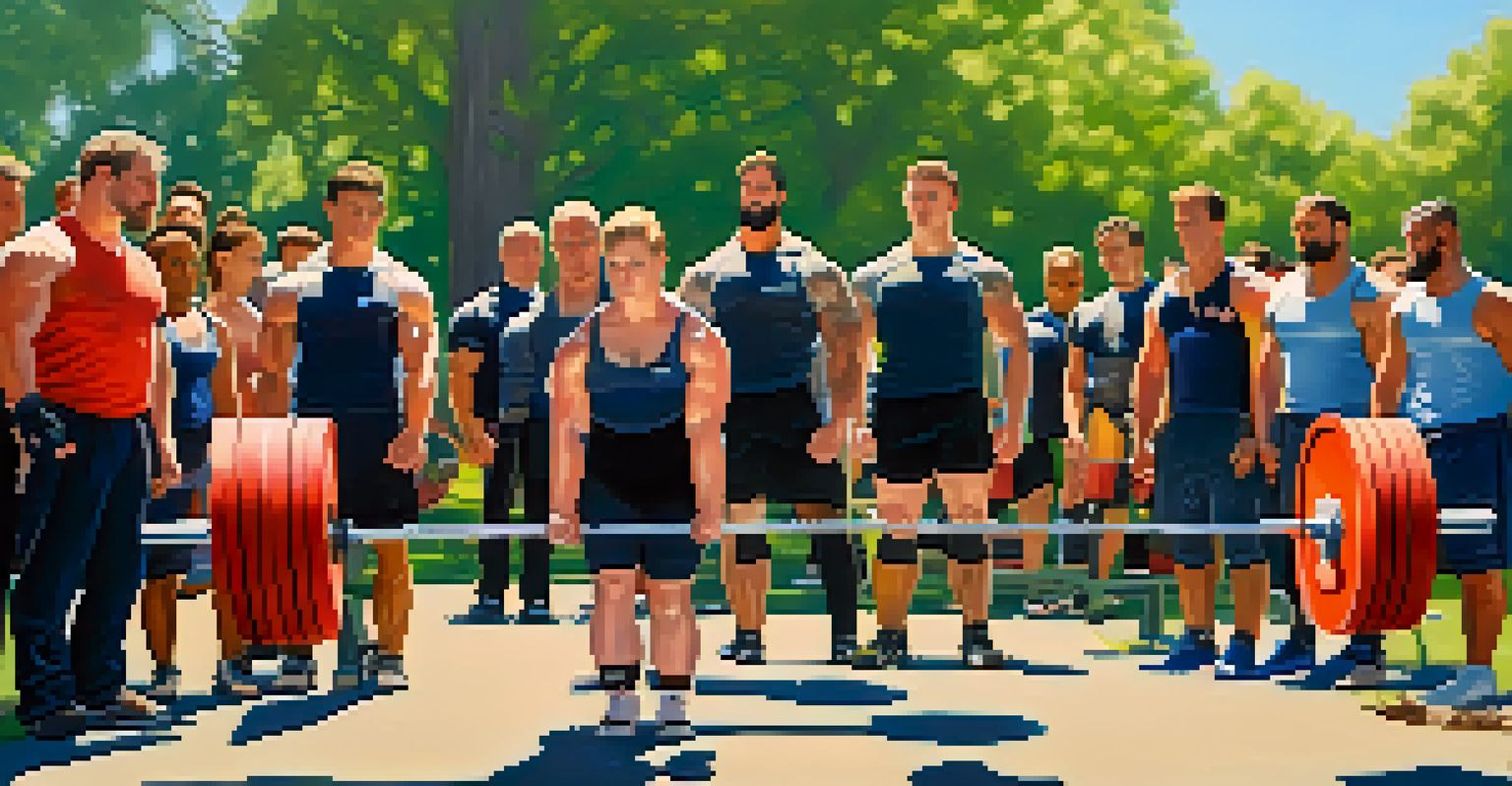Powerlifting Competition Rules: What First-Timers Should Know

Understanding the Basics of Powerlifting Competitions
Powerlifting competitions are structured events where athletes perform three main lifts: the squat, bench press, and deadlift. Each lifter gets three attempts for each lift, aiming to achieve their personal best. These competitions are judged, with strict rules that ensure fair play and safety for all participants.
Strength does not come from physical capacity. It comes from an indomitable will.
First-timers should familiarize themselves with the competition format, which usually involves weigh-ins, warm-ups, and the actual lifting events. The excitement of being surrounded by fellow lifters can be overwhelming, but understanding the flow of the competition can ease nerves.
Additionally, knowing the basics helps in strategizing your attempts. For instance, deciding which weights to attempt based on your training can set you up for success and help you feel more confident on the platform.
The Importance of Weigh-Ins and Weight Classes
Before the competition begins, all lifters must participate in weigh-ins to determine their weight class. This is crucial because powerlifting is organized by specific weight categories to ensure fairness. For example, lifters in different weight classes compete against others in their category, making it a level playing field.

Understanding your weight class helps you decide whether to cut weight or maintain your current weight leading up to the event. This strategy can significantly impact your performance, as being in the right class can optimize your chances of placing well.
Key Lifts in Powerlifting
Powerlifting competitions focus on three main lifts: squat, bench press, and deadlift, with each athlete aiming for their personal best.
It’s also vital to arrive early for weigh-ins, as there’s often a time limit. This allows you to settle in and mentally prepare for the competition ahead, ensuring you’re ready to give it your all on lift day.
Equipment and Gear: What You Need for Competition
In powerlifting, the right equipment is essential, not just for performance but also for safety. Lifters typically wear a singlet, which is a one-piece suit that conforms to regulations. Additionally, you may need to invest in supportive gear like knee sleeves, belts, and appropriate footwear to enhance your lifts.
Success is where preparation and opportunity meet.
Many competitions also have specific rules regarding the type of equipment that can be worn. For instance, some federations allow the use of bench shirts or squat suits, while others may not. It’s crucial to check the specific rules of the competition you’re entering to avoid disqualification.
Finally, don’t forget about personal items like chalk for grip or wrist wraps for extra support. Packing these essentials ahead of time ensures you’re not scrambling last minute, giving you peace of mind to focus on your performance.
Lifting Techniques: Mastering the Three Main Lifts
Mastering proper lifting techniques is key to success in powerlifting. Each lift has its own set of rules and techniques that must be followed during competition. For example, in the squat, you must ensure that your hips descend below your knees before ascending, while keeping your feet flat on the ground.
During the bench press, the bar must touch your chest before you press it upward in a controlled manner. Paying attention to these details not only increases your chances of a successful lift but also prevents injuries.
Importance of Weight Classes
Weigh-ins determine weight classes, ensuring fair competition and influencing strategies that can impact performance.
Practicing these lifts with a coach or experienced lifters can help refine your technique. The right form not only enhances your performance but also builds the confidence to tackle heavier weights come competition day.
Commands: What to Expect from Judges
During the competition, understanding the commands issued by judges is crucial for a successful lift. For each lift, the judges will give specific commands that you must follow to receive a valid attempt. For example, in the squat, you may hear 'squat,' 'rack,' and in the bench press, commands include 'start,' 'press,' and 'rack.'
Failing to follow these commands can result in a no-lift, which can be disheartening for first-timers. Therefore, it’s beneficial to practice under simulated competition conditions where you can get accustomed to the timing and flow of these commands.
Having a reliable support team or coach can also help you stay calm and focused when it’s your turn to lift. They can remind you of the commands and offer encouragement, making the experience less daunting.
Scoring and Judging: How Lifts Are Evaluated
Understanding how lifts are scored can demystify the competition process. Each successful lift is given a score based on the weight lifted, and your total score is the sum of your best attempts in each of the three lifts. The lifter with the highest total in their weight class is declared the winner.
Judging can vary slightly between federations, but typically, three judges evaluate each lift. They’ll be looking for compliance with technical rules, such as depth in squats or full extension in bench presses, and will signal their decision with white (successful) or red (failed) lights.
Mental Prep for Competition Day
Mental preparation, including visualization and support from teammates, plays a crucial role in managing competition anxiety and boosting confidence.
This scoring system emphasizes the importance of not just lifting heavy but also lifting correctly. Many first-timers find it helpful to review the judging criteria ahead of time to know what to focus on during their lifts.
Mental Preparation: Building Confidence for Competition Day
Mental preparation is just as crucial as physical training when it comes to powerlifting. First-timers often experience anxiety leading up to competition day, which can affect performance. Developing a pre-lift routine, such as visualization techniques or deep breathing exercises, can help calm nerves.
Visualization is a powerful tool used by many athletes. Imagine yourself successfully completing each lift, picturing the entire process from your approach to the platform to the moment you rack the weight. This can create a positive mindset and boost your confidence.

Additionally, surrounding yourself with supportive teammates or friends can create a positive atmosphere. Their encouragement can help you focus on the lifts rather than the potential pressure of competition, making the experience more enjoyable.
Post-Competition: What to Expect After Lifting
After the competition, it’s important to reflect on your performance. Whether you hit your goals or not, take some time to analyze what went well and what could be improved for next time. This self-reflection can guide your training in the future and help you set realistic goals.
Many lifters also take the opportunity to bond with others in the community after the event. Sharing experiences and celebrating each other’s successes can foster a sense of camaraderie, making the journey more rewarding.
Lastly, remember to rest and recover. Competing can be physically and mentally taxing, so giving your body the time it needs to recuperate is essential. Embrace the post-competition phase, as it’s a vital part of the growth process in your powerlifting journey.